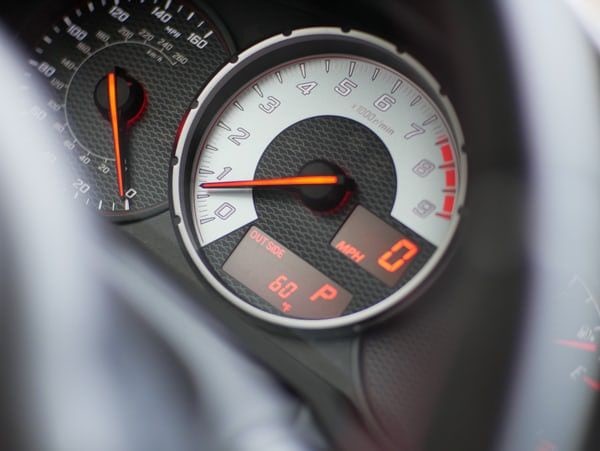We know that taking your Pennsylvania road test can be nerve-wracking. With a little preparation and insight into the test itself, there's nothing to be worried about. This guide will make sure you know the specific requirements in Pennsylvania, what you can expect on the road test itself and give our best practice tips. Here's exactly what you need to know to pass your Pennsylvania road test.
What to know before your Pennsylvania road test
First, you need to have a road test scheduled. There are no walk-ins. Save time and make a Pennsylvania road test appointment online. Next, make sure you have valid registration and insurance for the vehicle you'll be taking your test in. You'll need these documents when you check-in at the DMV. Lastly, make sure your testing vehicle meets Pennsylvania requirements, and that you have a licensed driver to accompany you to your road test. We've listed out the car requirements for you in the next section, to make it easier to go through and check off each one.
Once you verified your road test, paperwork, and car requirements, it's time for more practice. In Pennsylvania, unlike a few other states, you can practice in the area around the DMV where your road test is scheduled. We strongly recommend that you do, as this is where part of your road test will be. Take time and get to know the area.
What are the vehicle requirements for the Pennsylvania road test?
Many people are denied testing because their car doesn't meet the state requirements. Check these and check them again. Here's what your vehicle needs to have:
- Current registration, insurance, and inspection sticker
- A windshield with no cracks or debris that would obstruct the view
- Key safety requirements: working speedometer, horn, rearview mirror, seatbelts and windshield wipers.
- Operable doors: the driver and passenger doors must open from the inside and outside.
- Working lights: brake lights, turn signal lights in front and back, headlights and taillights.
- No service or warning lights illuminated on the dashboard
If you don't have a vehicle that meets all of these requirements and/or a sponsor to take you to your road test, you have a few options. You can get a car through a driving school, see if a friend or family can accompany you with their car, or Skip offers a car and driver for the Pennsylvania road test which you can reserve ahead of time online.
What to know the day of your Pennsylvania road test
First, get to the DMV early! If you're late, they'll ask you to reschedule. In Pennsylvania, you don't need to go inside the actual DMV to check-in. Instead, you'll just pull right into the road test line in the parking lot. The road test line area is usually very easy to spot, often marked with orange cones or a large sign with an arrow outside the DMV. You'll wait in line with your licensed driver until an examiner comes out to meet you.
The examiner will come to the driver's side window to ask for their Driver's License, your permit, as well as the registration and insurance for the vehicle. Your licensed driver will then get out (and can wait inside the DMV for you) and the examiner will begin the test, which starts with the vehicle safety check. They'll ask you to show them the car's hazard lights, left and right blinker, horn as well as hand signals. Then you'll start the driving portion of the test, which starts there in the parking lot. The examiner will ask you to parallel park and make a 3-point turn before heading out to the road for the remainder of the test.
When leaving the DMV parking lot, many locations have a stop sign before you can exit onto the road. Be sure to see this and stop! If you roll through this stop sign, it's an automatic failure and the test will end there. We've seen many people fail at this point, so don't make this mistake.
The test itself is 10-15 minutes. It will go by quickly, so take your time. Every minute counts and you'll think and perform better if you don't rush.
What will I be tested on for the Pennsylvania road test?
- Three-point turn: This is the most common mistake on the test, so take your time practicing until you get it right.
- Parallel parking: Remember you are not allowed to hit the curb while performing this maneuver.
- Observing right-of-way: Allow pedestrians to cross. Remember to pull over and stop for emergency vehicles to pass and don't enter an intersection where you'll interfere with other traffic.
- Stopping smoothly: Start slowing well ahead of time to avoid a sudden or jerky stop.
- Backing up: Back for a distance of 50 feet at a slow speed while turning your head and looking over your right shoulder to the rear.
- Signaling and turning: Get into the proper lane and signal your turn for the last *200 feet*. Right and left turns will be on your test. Even though they're basic, don't forget to practice these.
- Passing: always look ahead and behind to make sure you can pass safely.
- Follow at a safe distance: don't follow too close behind other cars. Keep a minimum following distance of three to four seconds.
Lastly, during your road test, it's highly likely that your examiner will be taking notes. This is nothing to worry about! The examiner may simply be checking off requirements as you complete them. Keep your eyes on the road and not on your examiner, and you'll do just fine.
What happens after my Pennsylvania road test?
Congratulations on making it this far! If you passed, the tester will let you know where to go to get your license. If you failed, not to worry, most people pass by their second try. In Pennsylvania, you can take your test again as soon as the next day. Each time, make sure you have a licensed driver with you and car for the road test. In the meantime, keep practicing and re-schedule your road test when you feel ready. 🙂
Need other Pennsylvania DMV help?
We're here to help! Email us at hello@helloskip.com if you have questions we haven't answered here!


